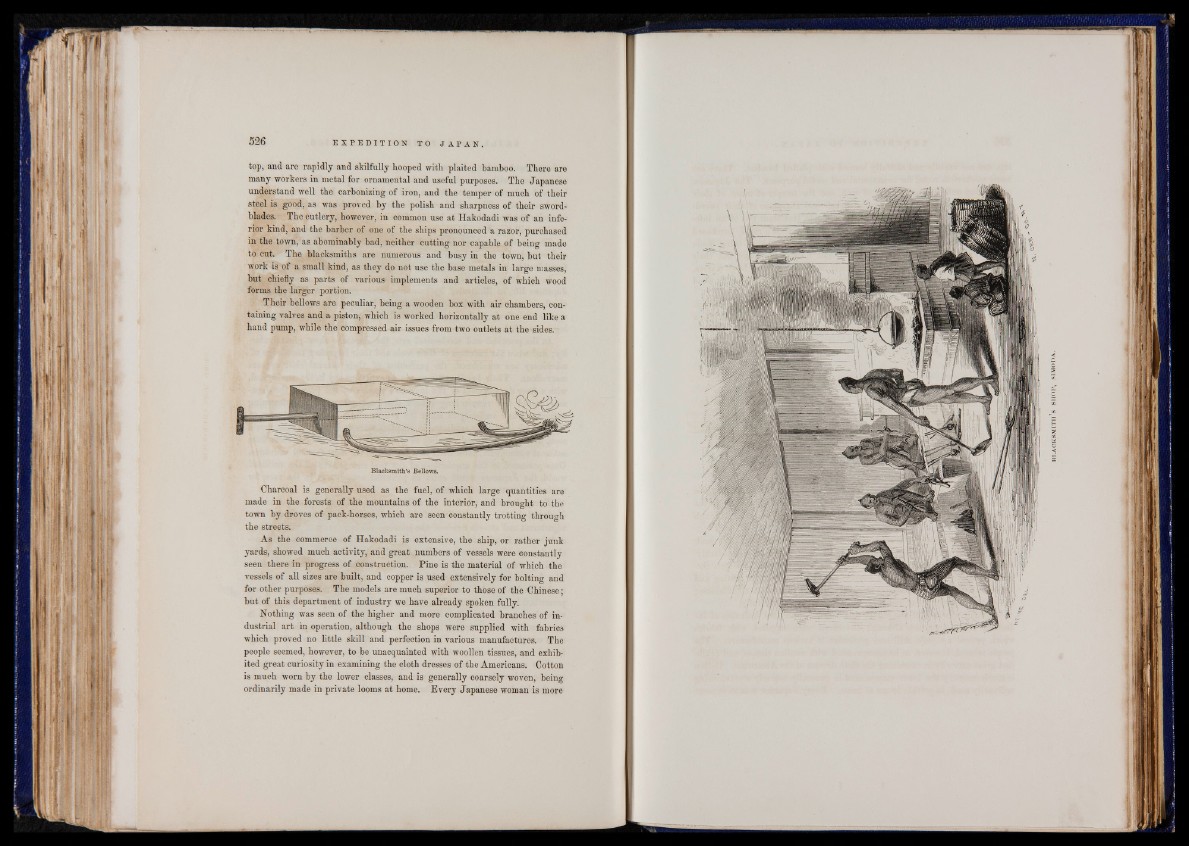
top, and are r a p i d ly and skilfully hooped with plaited bamboo. There are
many workers in metal for ornamental and useful purposes. The Japanese
understand well the carbonizing of iron, and the temper of much of their
steel is good, as was proved by the polish and sharpness of their sword-
blades. The cutlery, however, in common use at Hakodadi was of an inferior
kind, and the barber of one of the ships pronounced a razor, purchased
in the town, as abominably bad, neither cutting nor capable of being made
to cut. The blacksmiths are numerous and busy in the town, but their
work is of a small kind, as they do not use the base metals in large masses,
but chiefly as parts of various implements and articles, of which wood
forms the larger portion.
Their bellows are peculiar, being a wooden box with air chambers, containing
valves and a piston, which is worked horizontally at one end like a
hand pump, while the compressed air issues from two outlets at the sides.
Charcoal is generally used as the fuel, of which large quantities are
made in the forests of the mountains of the interior, and brought to the
town by droves of pack-horses, which are seen constantly trotting through
the streets.
As the commerce of Hakodadi is extensive, the ship, or rather junk
yards, showed much activity, and great numbers of vessels were constantly
seen there in progress of construction. Pine is the material of which the
vessels of all sizes are built, and copper is used extensively for bolting and
for other purposes. The models are much superior to those of the Chinese;
but of this department of industry we have already spoken fully.
Nothing was seen of the higher and more complicated branches of industrial
art in operation, although the shops were supplied with fabrics
which proved no little skill and perfection in various manufactures. The
people seemed, however, to be unacquainted with woollen tissues, and exhibited
great curiosity in examining the cloth dresses of the Americans. Cotton
is much worn by the lower classes, and is generally coarsely woven, being
ordinarily made in private looms at home. Every Japanese woman is more